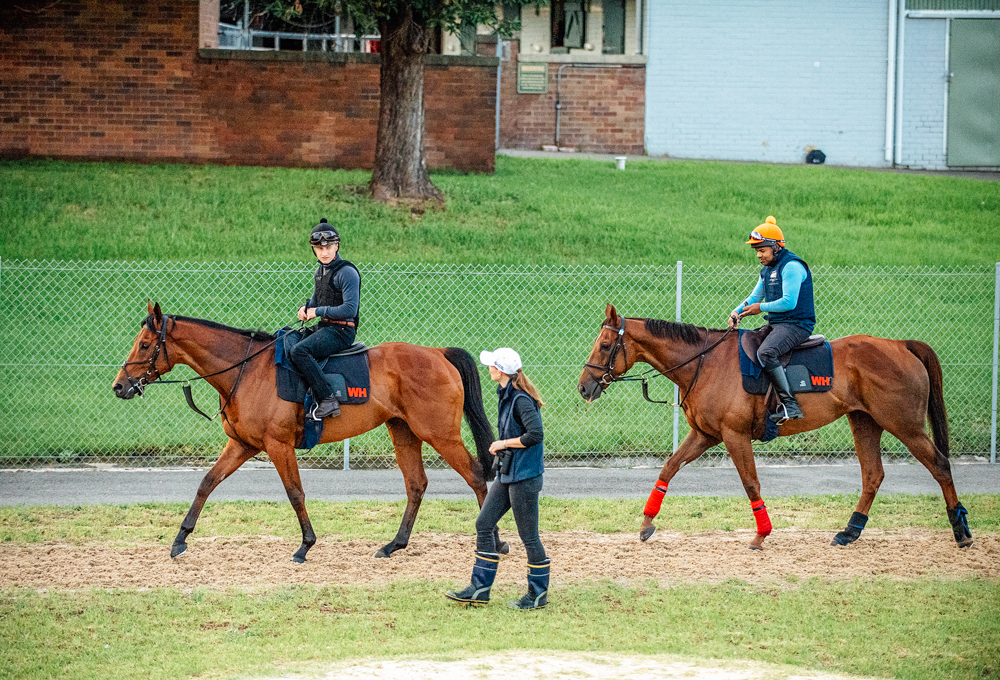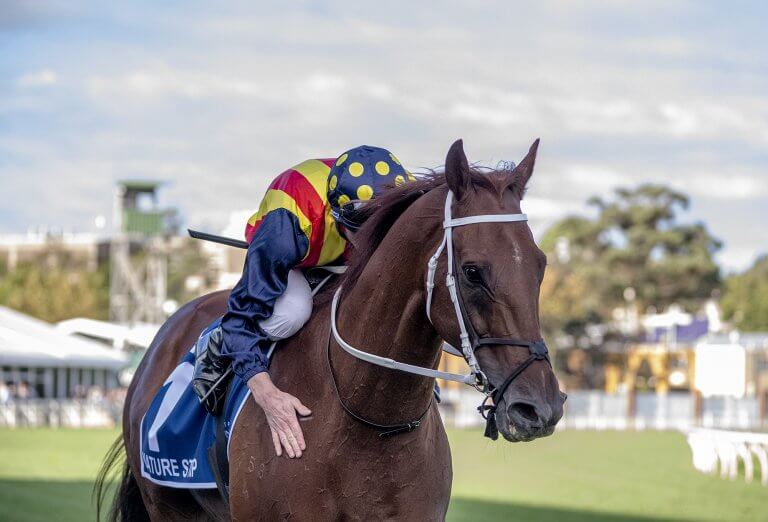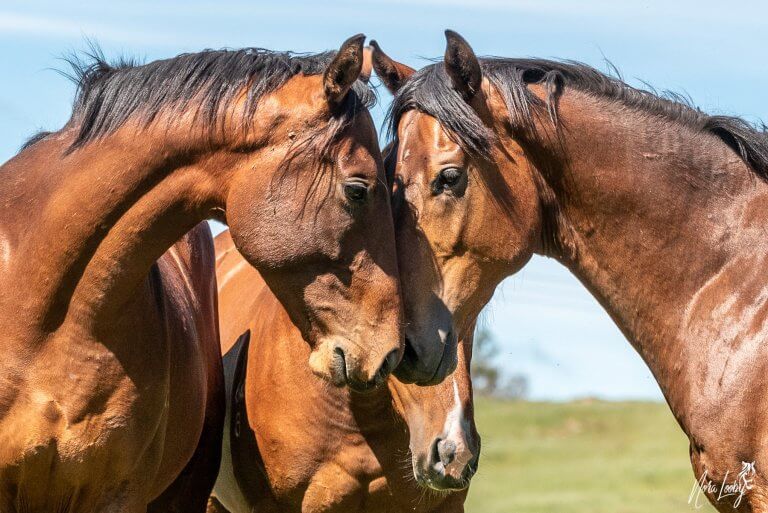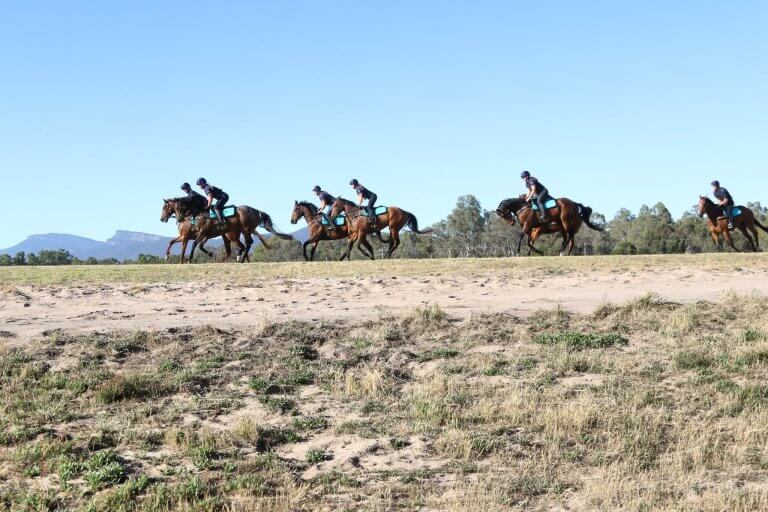You’ve heard it everywhere on social media; the broad statement condemning horse racing as being cruel. But is it?
Racehorses are athletes. Logically no athlete is going to perform at their peak unless they are fit, healthy, and happy.
To keep horses healthy, happy, and fit, takes a lot of work from humans. Typically, every horse is looked after by a strapper (or groom), track rider, as well as a farrier, a veterinarian, a physiotherapist, and a trainer who oversees everything.
We break down the components of horse racing that can be perceived as ‘cruel’.
Isn’t racing hard on their bodies?
Racehorses are bred to race. Their bodies are designed for it and trained for it. It would be cruel (and pointless) to take a horse out of a paddock and put them in a race without preparation because they wouldn’t have the fitness or speed needed.
Horses go through a fitness regime to get ready for a race, and this takes at least three months.
Horses also can’t stay in peak fitness for very long, so they spend time away from racing to rest (called spelling). The program for each horse is designed for each individual; what works for one horse won’t work for all horses.
Some horses mature earlier, some need more time, some put on weight quickly (good do-er), etc.
But what about racing 2-year-olds? Well, this is the one of the most misrepresented elements of horse racing. In reality, data is definitive that horses which race at 2-years old have significantly longer careers than those who have their first starts later in life due the requirement of their bone to remodel for the purpose of racing early in life.
But don't they get injured and die?
All athletes get injured occasionally. In racehorses, most injuries are treatable, and the horse will go through a rehabilitation process and either return to training or be retired to another career.
Fortunately, deaths in racing are very rare in Australia, and, of course, we’re trying to eliminate them entirely. Australia is the safest country in the world to be a racehorse, with a typical rate of 105 fatalities in over 19,000 races in Australia in a year.
The most common health issue that affects any horse is colic, while other possible issues are the same kinds of soft-tissue injuries (muscle or tendon) common in humans. There’s also EIPH (Exercise Induced Pulmonary Haemorrhage), and also cardiac failure – which is so rare that causes cannot be accurately identified.
In very rare cases, the worst-case scenario is a severe fracture. Most of these injuries are able to be treated, including minor fractures, with the horse either returning to racing or moving into a career as a broodmare or other equestrian pursuits.
What about whips?
Whips are used for steering. Because a jockey sits above the horse, they can’t use their legs to guide the horse (which is how riders steer a horse in other disciplines), so the whip is used instead of their legs.
Most of the time the whip doesn’t hit the horse; it is enough to wave it beside them. The whip is also used to remind a horse to keep going at the end of a race. There are rules around whip use – strictly enforced by stewards – and what whips are made from (padded foam) to ensure that horses aren’t injured by them.
But the losers get shot?
Absolutely not.
On average a horse only wins once in every ten starts. That’s a lot more losing than winning. Racehorse owners are used to losing!
Even if a horse is slow, they can still have a significant commercial value. Those heading to breeding paddocks represent around 30% of the retiring racing population.
As the thoroughbred is a talented athletic breed of horse, 45% of horses retired from racing, representing around 2,700 thoroughbreds per year, move into equestrian/pleasure riding careers.
Although people who own racehorses are from all sorts of backgrounds, some have farms of their own and are experienced with horses, with 3.9% of the horses retired returning to their owners.
Aren’t the horses all drugged?
Racing has a principle of ‘drug free’ racing. Under the rules of Australian racing, no horse is allowed to run in a race whilst under the influence of any medication, including anti-inflammatories, steroids, hormones and diuretics.
Horses are regularly tested, before and after races and in and out of training, ensuring racing is as clean as possible.
All athletes (horses and humans) take medication to help their bodies adjust to
their training regime.
Mild, non-steroidal anti inflammatories such as aspirin, or the more horse-specific pain relief medication phenylbutazone (known as ‘bute’), are commonly used to aid in the recovery of sickness, pain and inflammation, just as humans turn to paracetamol and ibuprofen.
Are they lonely?
Horses are social herd animals. From birth, they gallop together in groups for fun, naturally racing each other.
When they are ‘in work’, they live in stable blocks with each horse in its own box. The main reason is to stop them accidentally injuring each other. Stable blocks are designed so horses can see, smell, and touch each other. This set-up gives them a safe space of their own and with mates.
It is common to see racehorses travel with a companion, usually a pony but sometimes a goat. The companion’s job is to hang out with the racehorse and prevent stress. Ultimately, a horse will only run well if it is happy.









